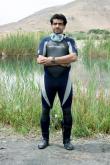کوسه های خلیج فارس در حال انقراض صید بی رویه کوسه و قاچاق به کشورهای آسیای شرقی در خلیج فارس شما مردم ایراندوست قضاوت کنید سکوت سازمانهای دولتی تا کی ؟ سزای این صیادان جنایتکار جز اعدام نیست کوسه ها جزئی از ماهیان غضروفی هستد که درخلیج فارس ودریای عمان دارای 19 گونه در قالب چهار خانواده عمده هستند. کوسه ها حلال گوشتند و از 400 گونه کوسه ماهی شناسایی شده است در دنیا 20گونه مهاجم هستند که از این میان نیز فقط سه گونه به نامهای ببری، سفید و ماکو اشتباهی به انسانها حمله می کنند که خوشبختانه این گونه های مهاجم در خلیج فارس وجود ندارند. متاسفانه طی سالیان اخیر با راه اندازی کارخانه های عمل آوری پیشرفته در کشورهای عربی حوزه خلیج فارس و حتی در کشورمان و به لحاظ این که قیمت کوسه در مقابل دیگر ماهیان خلیج فارس گرانتر است ، صیادان ایرانی و در کنار آن صیادان دیگر کشورهای حوزه خلیج فارس علاقه و گرایش عجیبی به صید کوسه پیدا کرده اند. صیادان برای جبران هزینه های خود به صید کوسه ماهیان روی آورده اند با بالا رفتن و گران شدن هزینه های سوخت، هزینه تعمیر و نگهداری موتور و افت محصول در میان صیادان جنوب کشور، صیادان با صید بی رویه کوسه ها به دنبال جبران هزینه های خود هستند به حدی که متاسفانه برخی از صیادان جنوب کشورمان با مجهز کردن فن آوری و تکنیکهای متنوع و مخرب به صید کوسه ماهیان روی آورده اند. کارشناس شیلات استان بوشهر در این خصوص به خبرنگار مهر گفت: کوسه ها به گفته محققین قدیمی ترین گونه آبزی جهان که بیش از ??? میلیون سال پیش شکل گرفتند و در ??? میلیون سال اخیر به ندرت دستخوش تغییر و دگرگونی شده اند امروزه این گونه در خلیج فارس همانند دیگر ماهیان خلیج فارس با خطر انقراض روبرو شده است. حمید عالی حسینی افزود: با توجه به نتایج به دست آمده از تحقیقات به عمل آمده محققین متفق القول بر این باورند که دخایر این گونه با ارزش نه تنها در خلیج فارس بلکه در تمامی دریاهای جهان مورد تهدید واقع شده و این گونه که نقش بسیار حیاتی در اکوسیستم های دریایی ایقاء می کند در حال منقرض شدن است. وی اظهار داشت: کوسه ها یکی از ذخایر پر ارزش آبزیان هستند که از گذشته نه چندان دور به علت سودجویی استفاده از گوشت، روغن سرشار از ویتامین، باله ها، پوست، دندانها و به دلیل ذهنیت، شناخت نادرست و وحشت بی موردی که از این حیوان وجود دارد مورد هجوم بیرحمانه بشر قرار گرفته اند. این کارشناس اظهار داشت : در کنار مصارف صنعتی، بهداشتی و خوراکی کوسه ها، متاسفانه همواره از کوسه از آبزیان مرگ آفرین و رعب انگیز دریاها و اقیانوسها یاد می شود که هر کجا حضور داشت قطعاً ترس و دلهره و مرگ هم به دنبال آن خواهد آمد. عالی حسینی گفت: اکثر مردم تصور می کنند که همه کوسه ها مانند کوسه های سفید خطرناکند و همواره به دبنال شکار انسانها هستند این در حالی است که این تفکر و القائات غلط یکی دیگر از دلایل هجوم انسان ها به سوی ذخائر کوسه بوده است. وی اظهار داشت: افزایش سریع صید این گونه در ابتدا به خاطر تقاضای زیاد باله های آن بوده ولی بعداً به خاطر گوشت و غضورفشان به شدت مورد بهره برداری قرار گرفته اند. انقراض نسل کوسه ها به تعادل اکوسیستمهای دریایی لطمه می زند عالی حسینی اضافه کرد: در گذشته در خلیج فارس کوسه به صورت اتفاقی و بعضاً صید آنان تفننی صورت می گرفت اما متاسفانه طی سالیان اخیر برخی صیادان صید کوسه ها را به عنوان صید هدف مورد نظر قرار داده اند. وی اظهار داشت: صیادان ما گرایشی عجیب و غریب به زیاد صید کردن آبزیان در هر شرایط و با هر وسیله ای می نمایند و با این کار خود تا حد انقراض یا نزدیک به انقراض گونه های آبزی دست می زنند همانطور که گونه هایی ذی قیمتی مثل "حلوا سفید، راشگو ، ذخایر میگو و.... " رو به نابودی است کوسه ها نیز از این قایده مستثنی نیستند. این کارشناس افزود: این شکارچیان حیرت انگیز با خوردن موجودات ضعیف و زخمی، در بالای چرخه غذایی دریایی قرار میگیرند که آنها با این کار به حفظ تعادل در سیستم طبیعت کمک می کنند. محقق و کارشناس رفتارشناسی کوسه های خلیج فارس نیز به مهر گفت: متاسفانه خواض درمانی، صنعتی و بهداشتی کوسه ها عاملی برای به خطر افتادن نسلشان شده و به نحوی می توان گفت این ویژگیهای ارزنده ، بلای جانشان شده است. بهروز انواری افزود: کوسه ماهیان علاوه بر تعادل اکولوژیکی در دریاها، مصارف مختلفی درجهان دارند در گذشته از پوست کوسه برای تهیه سنباده وصیقل دادن وسایل چوبی استفاده می شده است. وی اظهار داشت: امروزه پوست کوسه در برخی کشورها به عنوان غذا خورده می شود اما بیشتر پوست کوسه ماهی درتهیه چرم و در تهیه وسایل لوکس مانند کیف دستی، کفش ، چکمه، کیف زنانه ومردانه، بندساعت، کمربند، جاکلیدی، جلدهفت تیر و دسته چاقو استفاده می شود . محقق و کارشناس رفتارشناسی کوسه های خلیج فارس گفت: ازکبد این آبزی علاوه بر استخراج ویتامین A برای تهیه روغن استفاده می شود، تعدادی ازکوسه ها نیز پوست باارزشی دارند، درحالیکه گوشت آنها بی ارزش است. وی ادامه داد : از طرف دیگر گوشت کوسه باله کوتاه ممکن است در بازار از ارزش زیادی برخوردار باشد. انواری اظهار داشت: ازدندان کوسه استفاده تزئینی و از غضروف آن استفاده دارویی می شود، باله کوسه نیز صادراتی بوده و در ژاپن از آن سوپ تهیه می کنند. این محقق کشورمان افزود: در استانهای ساحلی از قدیم الایام جگر کوسه برای روغن کاری بدنه لنج ها کاربرد داشت علاوه بر آن به عنوان یک داروی محلی، سنتی برای درمان انواع دردهای مفصلی، استخوانی و عضلانی و همچنین برای جلوگیری از ریزش مو استفاده می کردند. وی اضاقه کرد: استخراج مواد چربی خاصی از یک نوع کوسه برای تهیه مواد آرایشی و یا تهیه نخ جراحی از باله های کوسه از دیگر کاربرد آن در صنعت است. انواری گفت: پوست، گوشت، اندامهای داخلی، باله ها و ... از جمله اجزای کوسه است که می تواند برای صنعت و تجارت استفاده شود. استفاده از ادوات صیادی غیر مجاز در صید کوسه ها باب شده است یکی دیگر از کارشناسان شیلات نیز به خبرنگار مهر گفت: متاسقانه استفاده از ادوات صیادی غیر مجاز و مخرب در صید کوسه ها و دیگر آبزیان خلیج فارس در میان صیادان جنوب کشور باب شده است. علی طیاری افزود: صیادان جنوب کشور عملاً با تکنولوژی و کنیک های متنوع و بعضا مخرب صید به روش گوشگیر کف و یا همان رکسی به صید کوسه ها می پردازند. وی اظهار داشت: امروزه صیادان با استفاده از روشهای صید غیر مرسوم و با وارد کردن ادوات صید مخرب عملا به جنگ کوسه ها شتافته اند. طیاری گفت: برای جلوگیری از انقراض کوسه ماهیان در سالهای قبل دیدگاه ترویج لانگ لاین (رشته قلاب) این گونه های باارزش توسط شیلات مورد توجه قرار گرفت زیرا این روش علاوه بر انتخابی بودن روش صید، هیچ گونه ضرری نیز متوجه بستر دریا نمی کند. طیاری با بیان آنکه مسئولیت حفظ کوسه ماهیان و جلوگیری از کاهش این گونه ها و انقراض آنها متوجه مسئولان شیلاتی است، افزود: بهره برداران نیز باید به طور مسئولانه در حفظ این گونه ها کوشا باشند. وی کاهش شناورهای صیادی و کنترل ادوات صید، جلوگیری از روش های صید غیر مرسوم و غیر استاندارد، جلوگیری ازصید در فصول ممنوعه و برخورد شدید با صیادان متخلف، ممانعت از صید قایقهای صیادی در نوار ساحلی و استفاده از روش صید لانگ لاین را برای ادامه صید و صیادی و حفظ گونه های کوسه خلیج فارس ضروری خواند. وی ابراز امیدواری کرد: با همکاری جامعه صیادی و مسئولان و با مدیریت صحیح و انجام پروژه های تحقیقاتی، صنعتی نظیر آنچه که در کشورهای توسعه یافته صورت می گیرد، ایران نیز بتواند از مزایای کوسه ماهیان برخوردار و این سرمایه ملی همواره برای نسلهای آینده ماندگار شود. اعمال ممنوعیت های شیلاتی در صید کوسه ها تاثیر گذار نبوده است یکی دیگر از کارشناس شیلاتی استان بوشهر نیز به مهر گفت: به رغم حساسیت های به وجود آمده چند سالی است شیلات در جهت قانونمند شدن صید و صیادی و همچنین اعمال یک مدیریت صید بهینه ممنوعیت صید کوسه ماهیان را اجرا نموده است که می توان تا حدودی گفت اعمال ممنوعیت های شیلاتی در صید کوسه ها تاثیر گذار نبوده است. وی که نخواست نامش در این گزارش آورده شود افزود: در اجرای طرح ممنوعیت صید کوسه ماهیان معمولاً در شش ماهه اول هر سال اعمال می شود که تا کنون این اعمال ممنوعیت نتوانسته از صید بی رویه آنها جلوگیری نماید که این خود دلایل مختلفی دارد. وی اظهار داشت: اول این که ابزار کنترلی دقیق و همچنین امکانات لازم در جهت جلوگیری از صید در فصول ممنوعه موجود نیست و از طرفی به دلیل این که کوسه ماهیان از سطح تا عمق آب زیست می کنند به عنوان صید ضمنی در تورهای صیادی گرفتار میشوند. این کارشناس اضافه کرد: در هر چهار استان جنوب کشور صید کوسه ماهیان به عنوان یک صید ضمنی محسوب می شود البته باید تاکید کرد که میزان این صید ضمنی کوسه ماهیان بسیار بالاست که خود حساسیت موضوع را بیش از پیش نمایان می سازد. وی اظهار داشت: ضمناً تورهایی که کوسه ماهیان با آن در صید سنتی صید میشوند عموما تورهای گوشگیر هووری است که برای صید تون ماهیان استفاده می شود. کارشناس شیلات بوشهر افزود: همچنین در روش صید ترال که توسط کشتی های ترالر در فصول صید میگو و ماهی انجام میگیرد نیز کوسه ماهیان در اندازه های مختلف صید می گردند. وی یادآور شد: در اکثر شناورهای صیادی صید کوسه ماهیان به صورت یک کار روتین در آمده است و صیادان بعد از صید باله ها را جدا نموده وگوشت آنها را نیز برای عرضه به بازار به عاملان خرید به فروش می رسانند کوسه های مولد در حال صید شدن هستند این کارشناس گفت: عموم کوسه های استحصالی بارور بوده و دارای جنین هستند که متاسفانه با صید بی رویه عملا ً از گردونه اکوسیستم های آبی خارج می شوند و این امر باعث خواهد شد تهدید جمعیت آنها با جدیت بیشتری دنبال شود. وی یادآور شد: بیشرین صید کوسه های در خلیج فارس و دریای عمان از سه گونه دوسه مری، چانه سفید و لیمباتوس است. باله های کوسه 25 الی 30 هزار تومان خرید و فروش می شود یکی از صیادان بوشهری که مخالف صید بی رویه کوسه ها بود نیز به مهر گفت: در حال حاضر باله های کوسه خشک شده بین 25 تا 30 هزار تومان و باله تر آنها 5 تا 7 هزار تومان خرید و فروش می شود. محمد ماهینی افزود: در هر چهار استان جنوبی کشور صید کوسه مشاهده می شود اما در برخی مناطق علی الخصوص سیستان و بلوچستان صید کوسه به خاطر فروش باله آن به کشور پاکستان با روند صعودی مواجه است که خود زنگ خطری را برای اکوسیستم آبی و شیلات به صدا در آورده است. وی اظهار داشت: علاوه بر بالاهای کوسه های بزرگتر متاسفانه کوسه های کوچک در حد 10 تا 30 سانتی متر نیز برای تاکسی درمی و خشک کردن و تزئینات مورد استفاده قرار می گیرد. ماهینی گفت: با توجه به این روغن کوسه خواص درمانی داشته و در رفع دردهای عضلانی مورد استفاده قرار می گیرد کبد این آبزی با ارزش دریایی نیز مورد استفاده قرار می گیرد و در کنار کبد غضروف آن نیز استفاده دارویی دارد. با توجه به حساسیت ایجاد شده و به دلیل با ارزش بودن ذخایر این گونه آبزی و صید بی رویه آنها جا دارد تمهیدات بیشتری را در جهت مدیریت صید آنها اعمال شود زیرا در غیر این صورت در آینده ای نه چندان دور کوسه های خلیج فارس و دریای عمان حیات را بدرود خواهند گفت. در ضمن باید اذعان کرد که ممنوعیتهای اعمال شده در طی سالهای گذشته نتایج قابل قبولی نداشته است بنابراین در پیش گرفتن تدابیر جدید، جدی و قابل اجرا در شرایط خاص آبی - اقلیمی و اجتماعی صیادی ایران به شدت احساس می شود. Sea stars are spiny, hard-skinned animals that live on the rocky sea floor. Starfish puts enormous number of eggs. After fertilization, the tiny, transparent larvae( baby se star) travels many miles for about two months. Design To feed on hard-shelled prey like a clam, the sea star firmly grasps it with its arms until the clam slightly opens its shell. The sea star then pushes its stomach out of its mouth and into the clam and begins to digest its insides. When the clam is digested, the sea star pulls its stomach back inside its own body. The information for such a feeding habit was given to the sea star by its all-knowing Creator. CLASS: Asteroidea ORDER: Seven orders FAMILY: Varies depending on order GENUS/SPECIES: Over 1,800 different species Size: Varies greatly depending on species Diet: Barnacles, chitons, snails, urchins, limpets, sponges, and sea anemones Habitat: Worldwide in all of earth’s oceans SCUBA DIVING IN PALAVAN Palawan province, is the best-kept diving secret in Asia… a stunning collection of WWII shipwrecks, and despite coral reefs, wine blue seas, white sand beaches, and waving palm trees, the area remains almost unvisited. Busuanga Island, at the northern tip of Palawan province, is the best-kept diving secret in Asia. Despite a stunning collection of WWII shipwrecks, and despite coral reefs, wine blue seas, white sand beaches, and waving palm trees, the area remains almost unvisited. Toss in Busuanga’s other virtues — limestone islands and cliffs, three airlines with daily service to Manila, and a world-class resort on a private tropical island — and you get something approaching paradise. Most of the visitors to Busuanga are divers, and they come to explore the shipwrecks. These were thoughtfully supplied by U.S. Admiral William Halsey on September 24, 1944, at 9:00 am. Sensing that the area would one day be a mecca for scuba divers, Halsey and the American fleet sank 24 Japanese warships, 12 of them in conveniently shallow water, in a wide arc around the south side of Busuanga Island. In the intervening years, a wealth of sea life has grown on the sunken ships. Every inch of steel sprouts some bizarre sea creature. The wrecks are covered with corals and clams and sea fans, and swarming with lionfish and groupers and scorpion fish and squid and eels and sea squirts and a thousand other life forms both plain and fantastical. An hour’s boat ride from Club Paradise — the world-class resort on the private island — is the wreck of the Kyokuzan Maru, a 152-metre freighter that was bombed on that fateful September morning. It lies in a sheltered bay, in 43 metres of water. The Kyokuzan is a deep dive, but with little current. Visibility is excellent. We drift down the huge mast and into the silent graveyard, over the abandoned deck and under the giant rudder. Pycnodonte clams cover the wreck, grinning through their saw-toothed shells. Clams and other filter feeders predominate here, because they don’t need strong currents to bring them food. The Kyokuzan, with its empty portholes and silent staircases, has an eerie, human quality to it. In the cargo hold sits a Toyota, its white-walled tires intact and clearly visible. On the deck lies a broken rice bowl. We swim through a narrow opening and into a ghostly green room. A string of portholes stretches into the dim distance, and small black fish swim in the silent circles. The Japanese sailors are gone but not forgotten. Angel fish and remoras guard their final resting place. Emerging from the dark, silent water into the warm Philippine sunshine is like being born again. Everyone is happy; cold beers are handed around. Bob, an American diver, delivers the epitaph: “It was better than my first girl,” he says. The House Reef dive, on the wave-swept beach in front of Club Paradise, is a good beginner’s dive, easier than the Kyokuzan. Isabelle Meier, like all the dive instructors at Club Paradise and its sister resort El Rio Y Mar (Las Hamacas), is low key and helpful. Before we wade into the sea, she checks all the crucial details: hoses hooked up, weight belt fastened, tank on tight, air turned on. Isabelle finds life everywhere on the House Reef: a glass shrimp in an anemone, and a jaw fish peering from a hole in the sand. She causes a giant clam to close its shell — snap — and points out moray eels, blue sea slugs, green and orange parrot fish, and a multi-coloured cuttlefish. She points again, and a green turtle glides away. The next day, we rise at dawn for the three hour boat ride to Apo Reef. Because scuba divers often rise at dawn, Club Paradise is an early-to-bed kind of place. After dark, the roving eye finds nothing more tempting or troublesome than a cold beer and a game of pool. But scuba diving is not the exclusive domain of the super fit. Quite the opposite — the tank in back is often balanced by a fat belly in front, usually of German origin, and the bubbling respirator is always replaced by a glowing cigarette and the wet brown neck of a San Miguel. The banca plows through the morning waves toward Apo Reef, due north, past some perfect islands and a few scattered fishermen. Finally it stops, and we all peer overboard. The ocean bottom is clearly visible 12 metres below, green and aqua blue. Mindoro looms in the distance. Instructor Marvin Alvarez explains the dive: an easy swim along a vertical reef wall. Excellent. Then Marvin draws a scribble in the diagram. That, he says, is the washing machine — an angry whirlpool in the middle of the reef, a ticket to blue oblivion that sucks in and spits out careless divers. “Stay close to the wall,” he says. We plunge into the water and sink beneath the waves, floating like a dozen astronauts, and drink in the sights: barrel sponges, turtles, a galaxy of bright fish and corals, sea fans, feather stars, and more, in endless colourful variety. At the end of the dive we feel the soft but persistent tug of the washing machine, and scramble for the boat. Then comes lunch. Scuba diving is like a Hemingway novel: food is forever being prepared, discussed, consumed, or digested. There’s good reason for this — it takes time for accumulated nitrogen to bubble out of the bloodstream — but sheer hedonism also plays a role. Lunch, a sunlit sea, and another dive still to come, is the life of Riley if there ever was one. The second Apo Reef dive hugs a deep gorge that drops hundreds of metres into a lightless void. Snappers patrol at the edge of darkness. Below the snappers, out of sight in the dark water, are the resident hammerheads. A strong current can bring the sharks up in search of food, but today they remain invisible. Countless fish swim in the clear cool water of Apo Reef, and the sea bottom is an explosion of colour. This is the ‘coral triangle,’ an area between the Philippines, Indonesia and Vietnam that contains more biological diversity than any ocean in the world. Scientists believe all sea life originated here, which explains the astonishing variety. I get a little high, tripping on the sights and daydreaming away, and soon forget the names of even the most common fish. This pleasant but dangerous condition is called nitrogen narcosis, and it adds another dimension to what is already an intense and surreal experience. Another feature of Club Paradise is the night dive. Wading into crashing surf in tropical darkness, burdened by tank, weight belt, fins, spotlight, and all the rest, is a high-voltage adventure. The first big wave knocks me back up the beach in an ungainly heap of gear. Marvin drags me back into the water, and we quickly descend 15 metres under water, where the ocean is a whole lot calmer. At night the urchins and crabs are very active, and so are the soft corals. Plankton glows green and blue, a parrot fish sleeps in protective mucous, and an ungodly strange crab prowls the rocks. A crown of thorns starfish, scourge of the reef, leaves a trail of devastation as it sucks the life out of the corals. But the best is yet to come — the short walk from dark sea to Dugong Bar, straight from dripping wetsuit into dry martini. We leave a trail of tanks, vests, fins, hoses, weight belts and other gear, and the alert and helpful Club Paradise staff takes care of it all. The next day we transfer to Club Paradise’s sister resort, El Rio Y Mar (Las Hamacas), which is closer to Cayangan Lake and most of the WWII shipwrecks. Cayangan Lake is a unique dive. It requires a long swim to Coron Island, then a tough scramble over steep limestone, weight belt and tank and fins in hand, under the tropical sun. The lake, fed by a hot spring, is not refreshing. As it gets deeper, the water gets hotter, and at 30 metres the temperature reaches 40°C. Naturally, some divers like to see how deep they can go, before they cook in their wetsuits like steamed clams. “We call it the dive to hell,” says instructor Eric Laurel. We adjust our masks and sink below the surface. Balls of silt hang suspended in the water, and the lake bottom, composed of pliable plastic mud, sinks away. Cayangan Lake is a world of brown and gray, a sepia-tinted moonscape devoid of colour. The thermocline, where the water changes temperature, is clearly visible. Shrimp and snails and small fish live above the thermocline, but below is the death zone, where nothing survives, except the odd diver on his way to hell. Three hours from Cayangan Lake, again by banca, is the wreck of the Taiei Maru, a WWII Japanese oil tanker. The Taiei Maru sits in 26 metres of water, a silent monument to a distant war, and a dangerous playground for scuba divers. Unlike the Kyokuzan, the Taiei Maru lies in an open strait, battered by strong currents that bring a rich stream of nutrients to the shipwreck. Lettuce and whip corals and anemones cover the Taiei Maru, and clouds of fusiliers, snappers, and batfish swim nearby. A gaudy lionfish hangs motionless near the bow, waiting to suck in unwary passersby - an underwater version of the Nathan Road shopkeeper. A little squid hovers in the open ocean, and three clownfish keep vigil over a sea anemone. Instructor Eric Laurel points at something, but we see nothing. He points again, to the same spot, and the outline of a scorpion fish appears, then another, then a third. The bottom of the wreck is covered with the shy, poisonous fish. Eric swims to a machine gun mount and fires mock bullets into the murky sea. This gun may have shot down some American bombers on that fateful morning. Five U.S. planes are still missing, says Eric, and like every diver in Busuanga, he is keen to locate them. But the gunner’s efforts were in vain: a tangled mass of steel near the bow attests to a direct bomb hit. We edge into the current for a closer look. Next we follow Eric through a long, dark, narrow tunnel. Above is the rusty roof of the Taiei Maru, and below are the spiny scorpion fish. My fins, lighter than water, brush the jagged roof, and the divers in front kick up a cloud of murky silt. The experience is nerve-wracking and thrilling. The Taiei Maru is close to El Rio Y Mar, the smaller sister resort of Club Paradise. At El Rio Y Mar, all the guests sit down to dinner together, and inevitably, the conversation turns to diving. There’s always another place to see, especially in the Philippines. The spaghetti shoal in Bohol is a crazy dive, says Eric, full of sea snakes. February is the hammerhead season at Panglao Island, and April is when the whale sharks come to Domsol Island. Many divers return to Busuanga: 12 of the 24 Japanese wrecks are dive sites. Eric’s favourite is the Akitsushima, a 148-metre aircraft carrier teeming with life, like fish soup, he says. There’s also a fantastic underwater cathedral, and many more coral reefs. Everyone makes plans to come back someday. After all, it’s only 90 minutes from Manila, and we expect to have the place virtually to ourselves. Again. A special place for divers who like wreck diving is Coron Bay close to Sangat island in Busuanga. I have visited this dive area twice (2000 and 2003) and I was impressed by beautifully covered wrecks They are in excellent condition and lie at depths that can be reached by sport divers (you can take Nitrox courses at the dive resort) and the dive guides know a lot about where to find all kinds of rare animals. We stayed both times at Sangat island - it is like staying in a paradise - very quiet but a nice little beach, comfortable bungalows and good food. Please take note, that all dives on the wrecks have to be planned very carefully. I personally think a dive computer is a must, because it is very easy to get close to deco-time! There are buoys with lines on all wrecks and our dive guide always had a tank with a regulator hanging at 5m depth under the dive boat . Our deepest dive was 35m to 39m on Irako where we did a very difficult dive through the kitchen and workrooms and 36m on Akitsushima where we dived through the large rent of the ship and past wheels, pipes and electric wires. I recommend these dives only for experienced divers. Just stay on the deck of these wrecks and enjoy the abundant life there! Do you get a kick out of exploring the watery world? Do you realise that more than 70% of this planet is covered by ocean? Do you wish you could explore outta space but don’t have the budget? Then you seriously need to consider Adventure Diving. There is literally another world out there, right beneath your nose. This portal is about showing you how to access some the most AMAZING shipwrecks and adventure scuba dives available to man. We love exploring new frontiers! Whether you’re after wreck diving, shark diving or reef diving - we will show you the best corners of the planet where you can get your fix. We have expert divers and explorers contributing to our content, so you can leverage off years of exploration and expertise. 


Sea Star


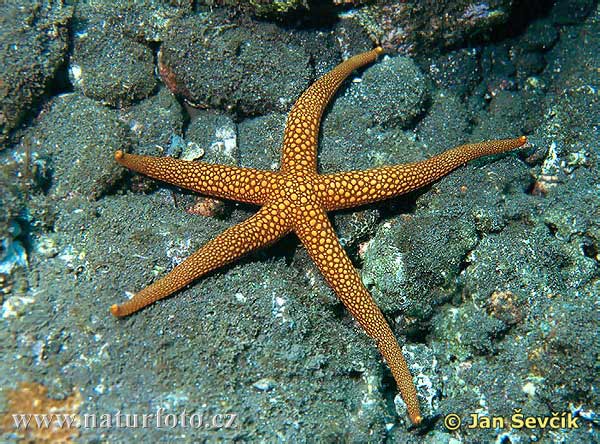
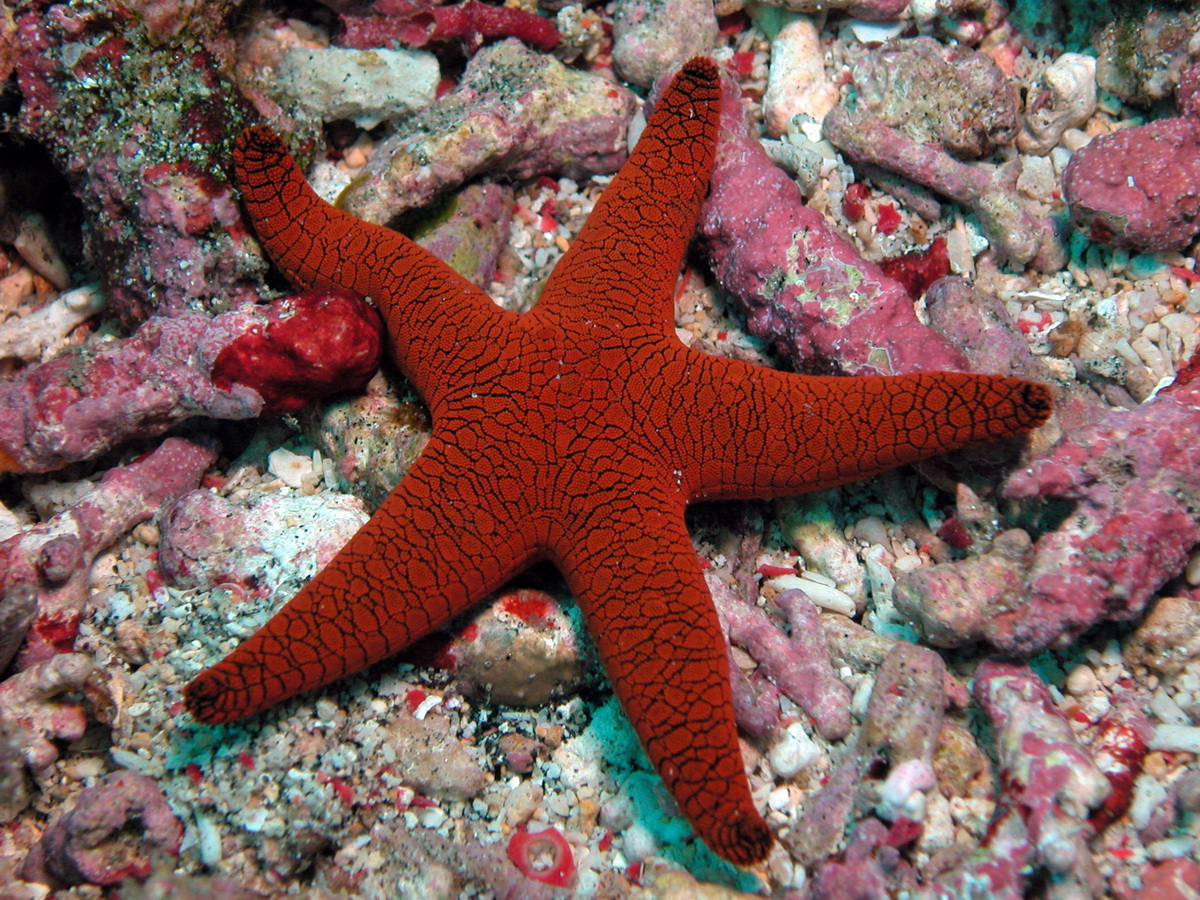

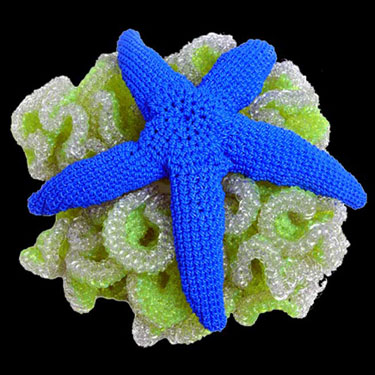
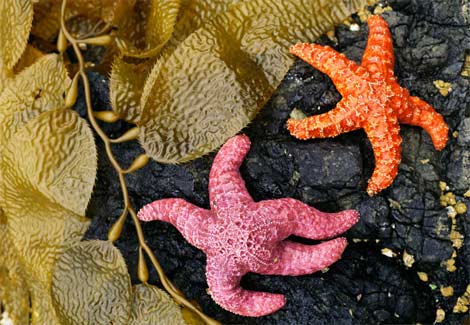
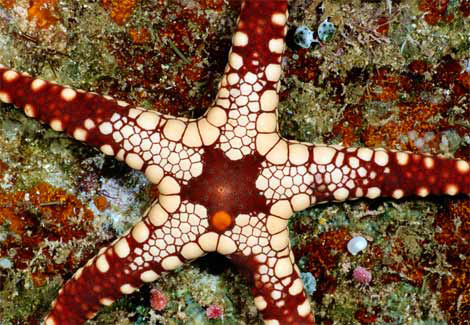
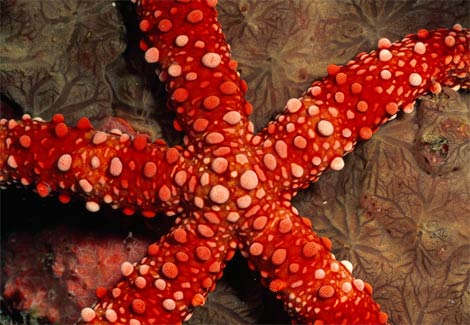
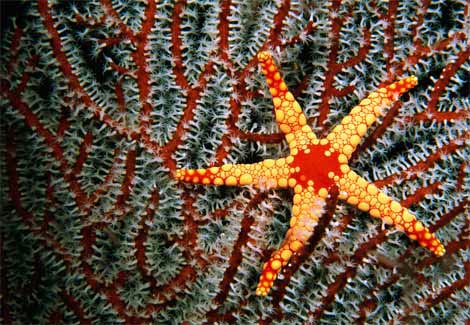
Features
Fun Facts




![]()

نوشته شده در جمعه 89/3/21ساعت
9:26 عصر توسط عباس حق نگهدار نظرات ( ) |
Sea stars are also known as starfish, but they are not fish at all.
A sea star can regrow arms that are lost, and if cut in half, some sea stars can grow into two separate creatures.
The fastest sea star moves at 360 ft per hour (110 m/h)—that’s only slightly faster than a snail.
نوشته شده در جمعه 89/3/21ساعت
9:9 عصر توسط عباس حق نگهدار نظرات ( ) |
Filed Under (Adventure Travel, Philippines) by admin on 02-03-2008
Filed Under (Adventure Travel) by admin on 02-03-2008
نوشته شده در جمعه 89/3/21ساعت
7:33 عصر توسط عباس حق نگهدار نظرات ( ) |

